Ca Hom mat weaving village in Ham Tan commune, Tra Cu district, Tra Vinh province was formed hundreds of years ago. From self-production, self-consumption, and gift giving, Ca Hom mats gradually became a commodity, known to many people and more and more families are doing the craft.
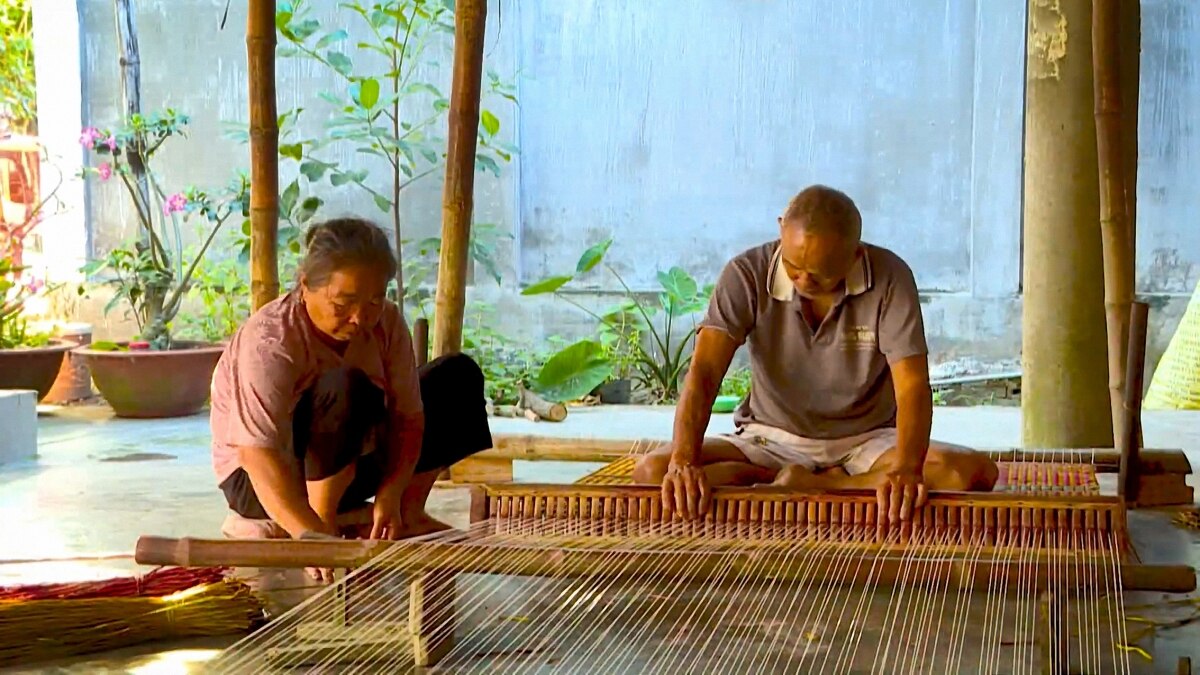
Ms. Diep Thi Som in Ham Tan commune, Tra Cu district said that weaving mats is the main source of income for many families here. Currently, the village's mat products are mainly flower mats with typical patterns of the Khmer people. Her family, although having been in the profession for many generations, still keeps the hand-weaving method, and can produce 1 pair of flower mats a day. Although the income is not high, it is stable and contributes to preserving and promoting the traditional cultural values of the nation. Ms. Diep Thi Som confided: "This mat weaving profession is also sustainable, enough to raise children to study. My family only works a few fields and weaves mats, which is okay. I also want to train my children and grandchildren to continue the profession in the future. I think my children and grandchildren will continue to keep the profession."
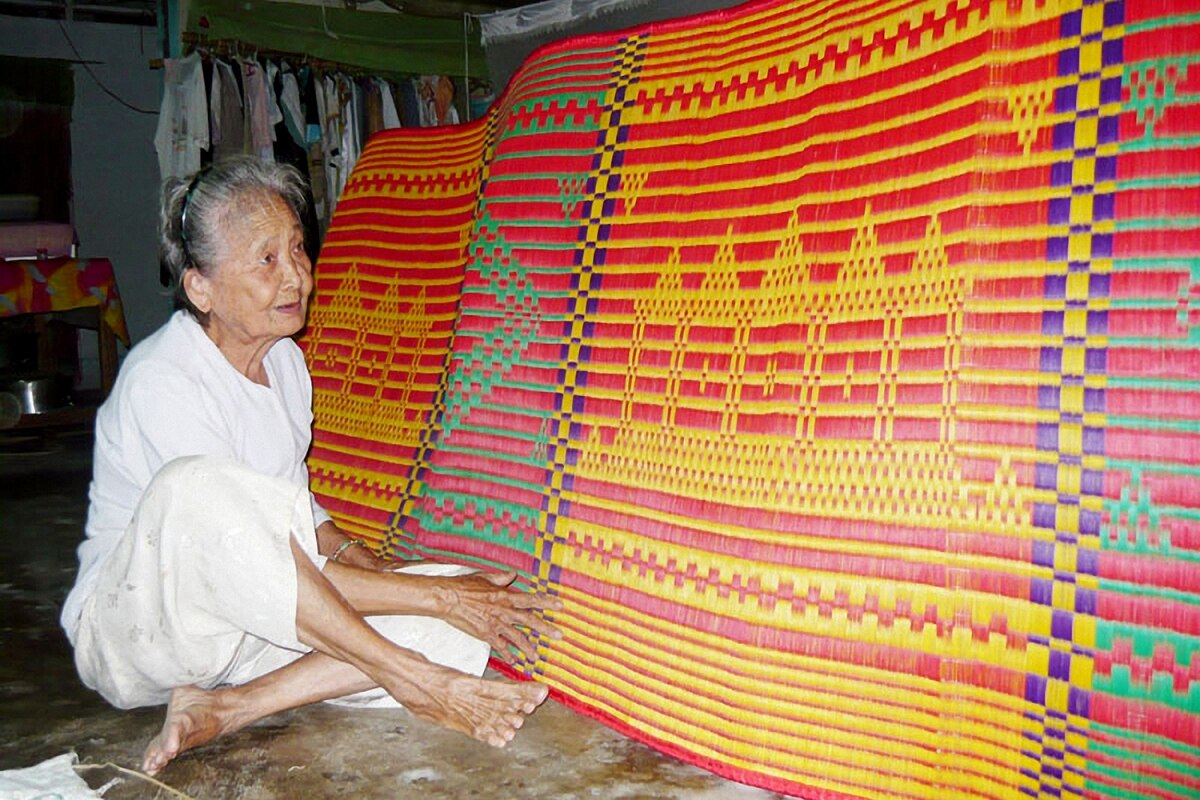
Kim Khanh shared that he learned to weave mats from his family since he was young. The hardest part of this job is cutting, splitting and drying the sedge. It usually takes a few hours to weave a mat, requiring the weaver to be careful and meticulous in every step. Weaving by hand requires two people, one to thread the sedge into the mold and one to pull the loom. Households that do not weave still make sedge, although the income is not high, it is still enough to cover family expenses.
Mr. Kim Khanh said: “This job is mainly based on labor, earning more than 200,000 VND/person a day. But you don’t have to work for hire and can do it at home. The raw materials are dried in advance, you bring them home to dye and dry again, in general it’s quite easy.”
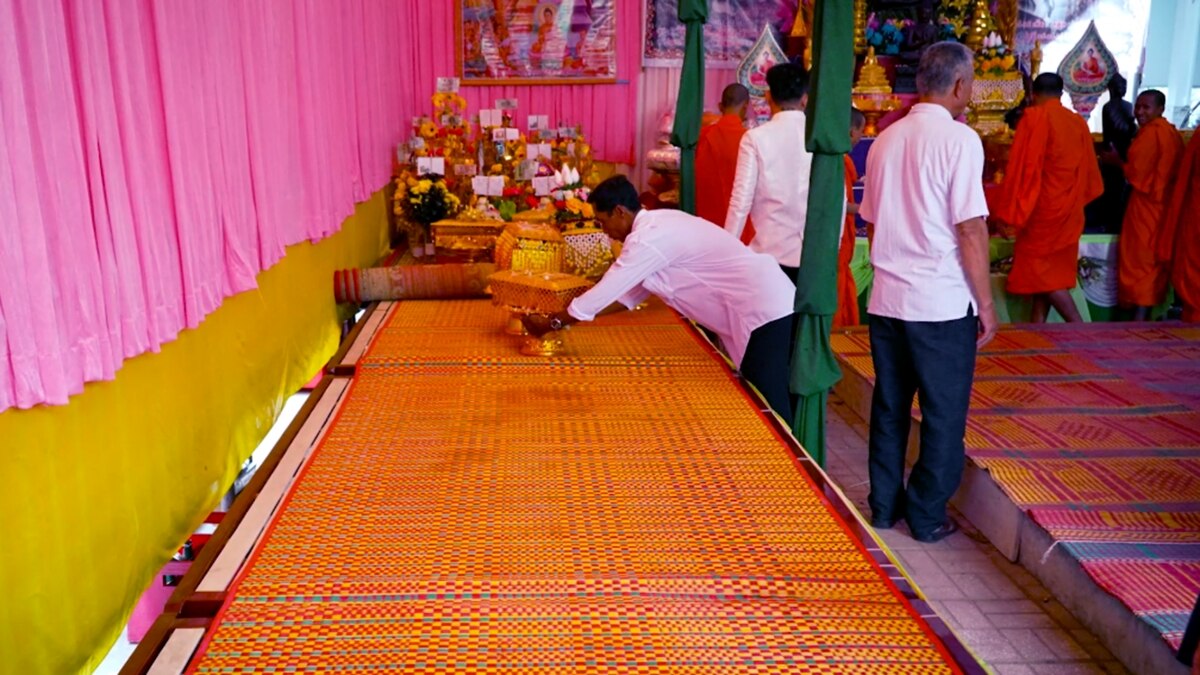
Unlike Mrs. Diep Thi Som and Mr. Kim Khanh, Mrs. Ma Thi Nhut's family has switched from hand weaving to using machines. Mrs. Nhat said that her family has been involved in the profession for more than 40 years. Previously, the main products were plain mats with low value, making life difficult. To meet customer tastes and increase productivity, she decided to invest in buying 2 weaving machines and 1 hemming machine. Since weaving by machine, productivity has been 3-4 times higher than hand weaving, thereby increasing income. On average, she sells several mats to the market each month, and the income is enough to cover living expenses and send her children to school. Although the economy is now quite well off, her eldest daughter continues to follow the profession.
Ms. Ma Thi Nhut shared: “Previously, hand weaving required 2 people, but now there is a shortage of people so we have to invest in machine weaving. Hand weaving can produce 3 pieces a day, while machine weaving can produce more than a dozen. Hand weaving uses tendons, while machine weaving uses strings, and the mats are thicker. Making mats brings in money, enough to get by.”
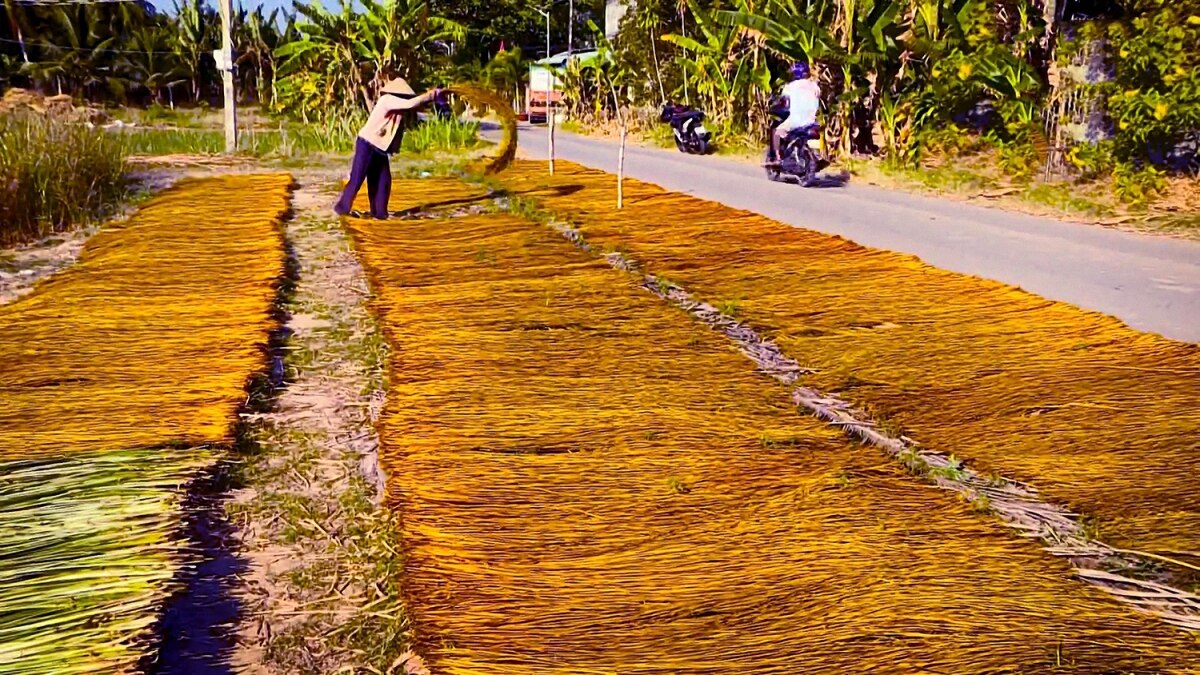
Ca Hom mat weaving village was formed nearly 100 years ago, the households working in the craft are mainly concentrated in Cho hamlet, Ca Hom hamlet and Ben Ba hamlet in Ham Tan commune. This is one of the traditional craft villages of Tra Vinh province, passed down from generation to generation. Although at times it was almost on the verge of extinction due to lack of raw materials, unstable output, and failure to keep up with customer tastes, with love for the craft and traditional culture, Ham Tan people have found ways to diversify products, invest in mechanization to increase productivity and reduce costs. Notably, at the end of 2014, Tra Vinh Provincial People's Committee decided to recognize this traditional craft village.
In recent years, the craft village has produced nearly 5,000 mats of all kinds each year, with a total revenue of more than 5.4 billion VND. Mr. Nguyen Chi Nguyen, Chairman of the People's Committee of Ham Tan Commune, Tra Cu District, said: "With the attention of the leaders of the District People's Committee as well as departments and branches, we have created conditions for our people to borrow capital; secondly, we have supported the cost of purchasing equipment and weaving machines of all kinds. Thanks to that, the mat weaving village has created stable jobs for more than 150 workers in the village."
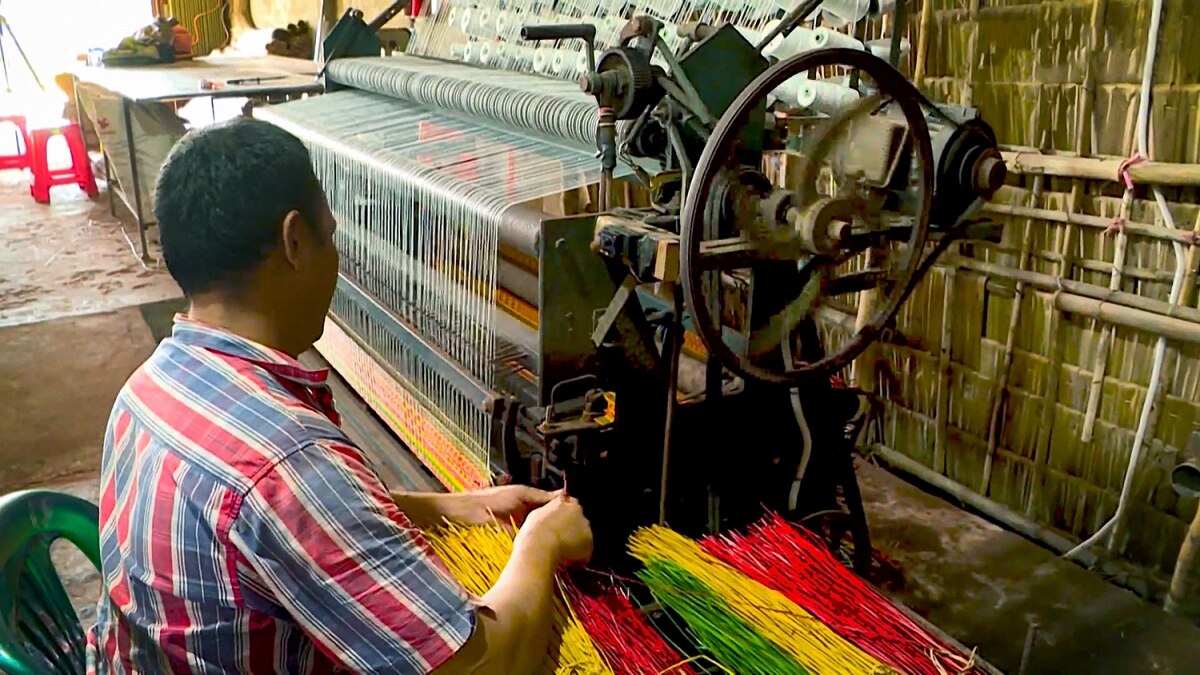
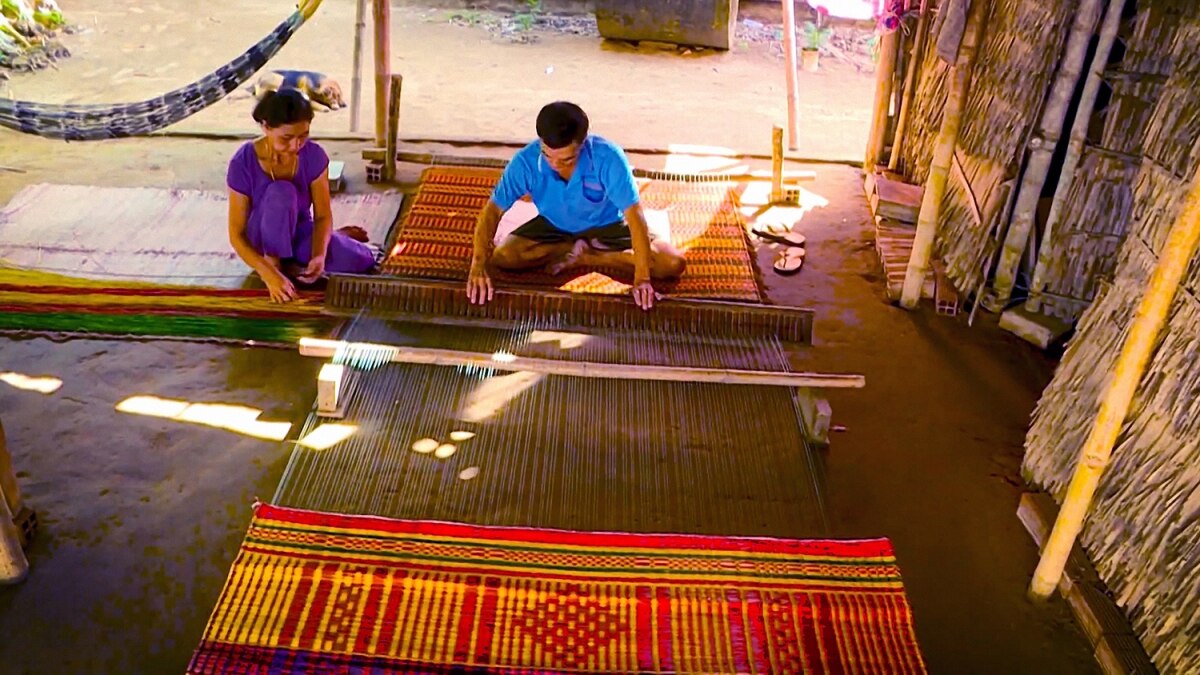
Recently, the Ministry of Culture, Sports and Tourism has decided to include Ca Hom mat weaving in the list of National Intangible Cultural Heritage, a type of traditional handicraft. Hopefully, in the near future, Ca Hom mat weaving village will have more conditions to develop, create a change, increase income for workers and contribute to preserving and conserving the unique traditional culture of the locality.





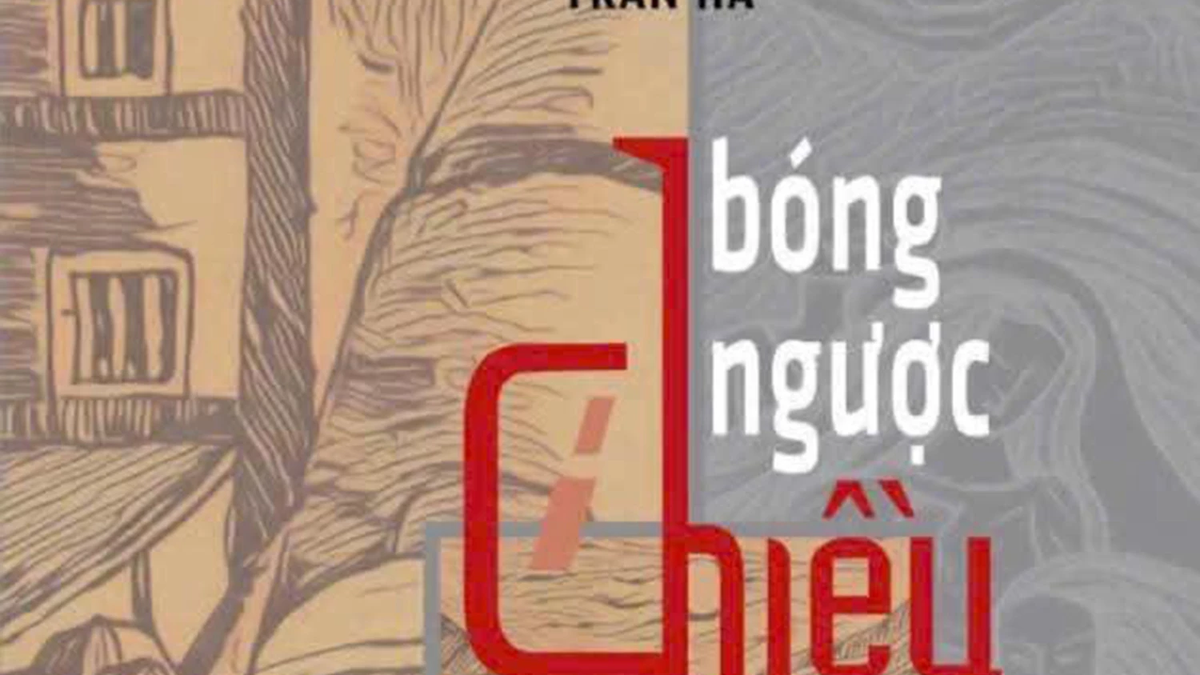




![[Video] More than 100 universities announce tuition fees for the 2025–2026 academic year](https://vphoto.vietnam.vn/thumb/1200x675/vietnam/resource/IMAGE/2025/7/18/7eacdc721552429494cf919b3a65b42e)


















































































![[Infographic] In 2025, 47 products will achieve national OCOP](https://vphoto.vietnam.vn/thumb/402x226/vietnam/resource/IMAGE/2025/7/16/5d672398b0744db3ab920e05db8e5b7d)





Comment (0)